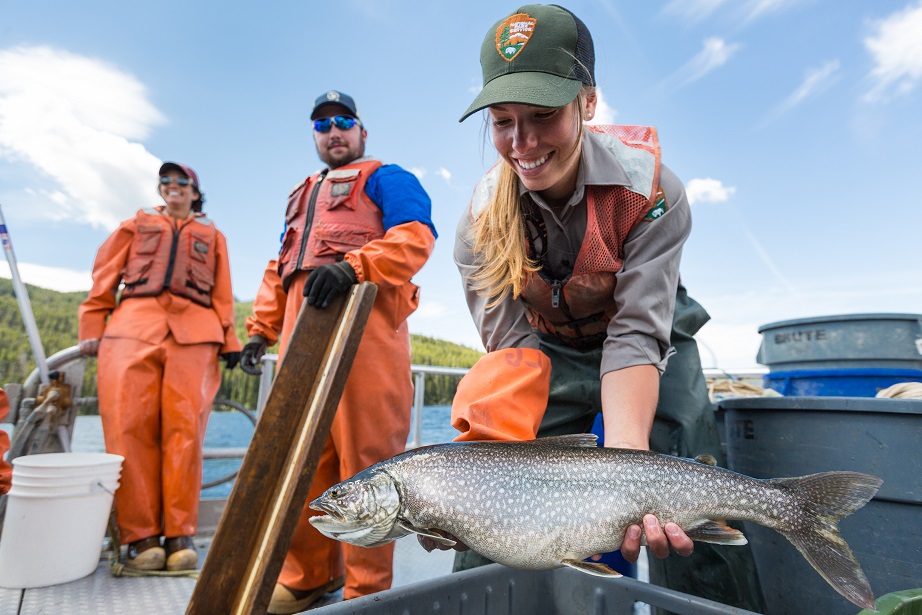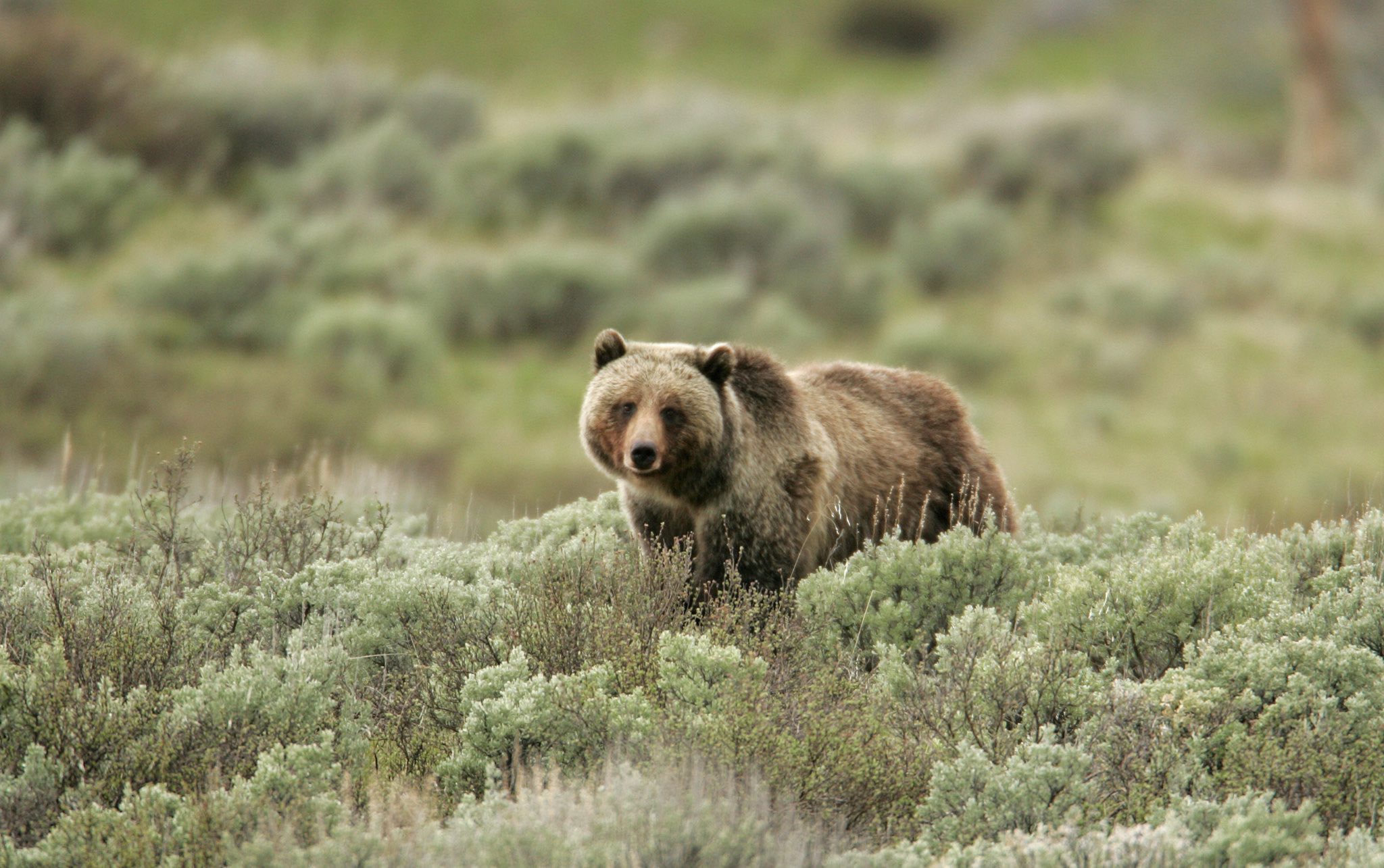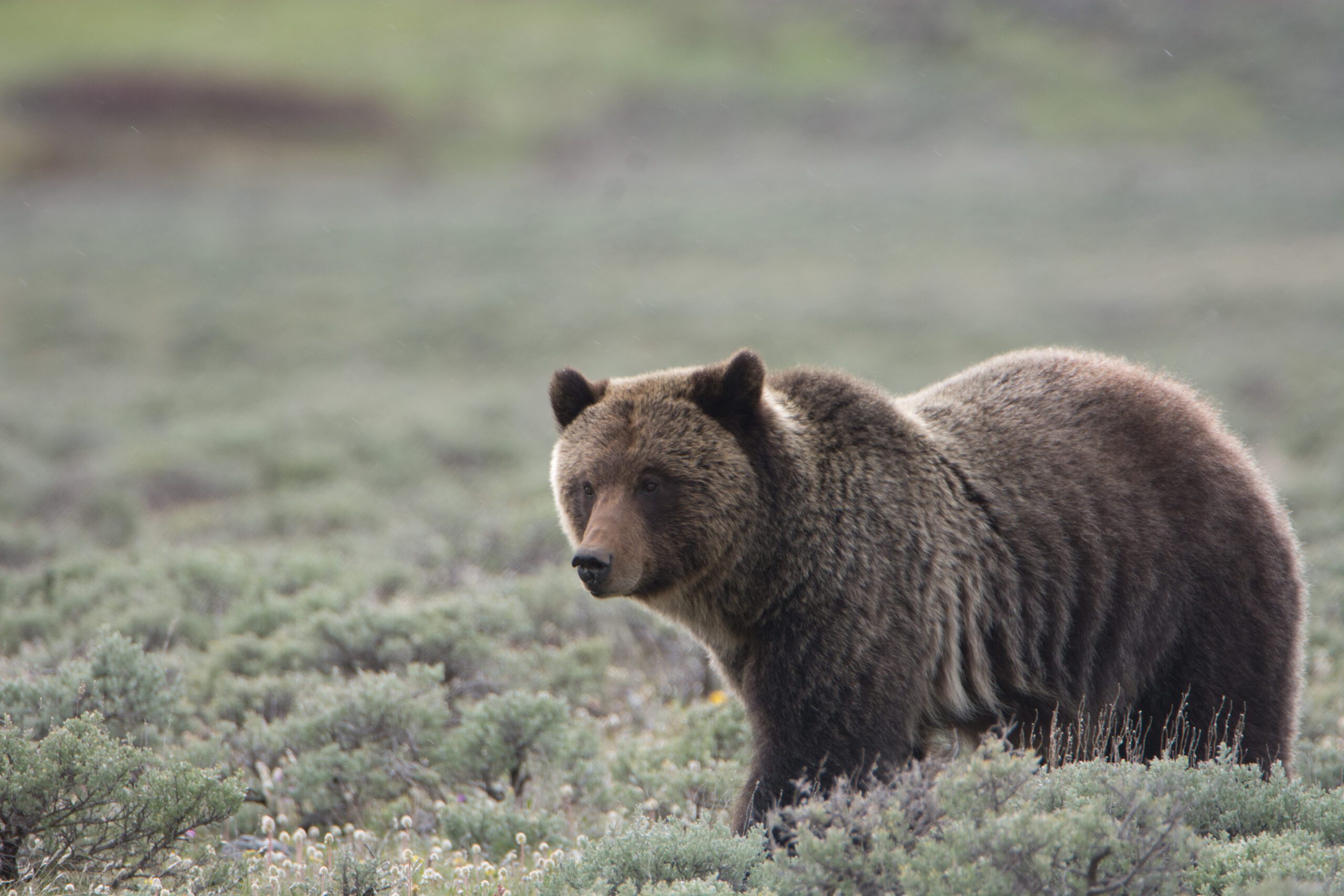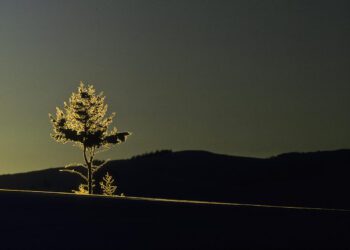By Jessianne Wright EBS Contributor
BOZEMAN – Recently Yellowstone National Park biologists held their annual angling meetings in area communities to address the ongoing efforts to keep the park’s fishery healthy.
Todd Koel, a fisheries biologist in Yellowstone, traveled to Bozeman, West Yellowstone, and Jackson and Cody in Wyoming, to lead a discussion with anglers and other stakeholders about efforts to eradicate lake trout in Yellowstone Lake, restore grayling and Yellowstone and westslope cutthroat trout, and prevent the spread of aquatic invasive species.
“The last thing we need is more [aquatic invasive species] showing up,” Koel said during the Bozeman meeting on April 30, to an audience of nearly 40 people at the Hilton Garden Inn.
This year, felt-soled boots will be banned from Yellowstone National Park for the first time in the park’s history as a preventative measure against the spread of aquatic invasive species.
“The goal isn’t to make fishing more difficult or to make walking more difficult,” said fisheries biologist Brian Ertel during the meeting.
“It’s really to protect the waters and what we have. The last thing we want to see is a shoreline filled with zebra mussels or quagga mussels,” he said, adding that studies have found that felt takes a long time to dry, allowing for small organisms to survive and possibly be carried to other bodies of water.
“Right now, we’re pretty fortunate in the park. We do have whirling disease, we do have New Zealand mud snails, but so far we’ve been able to avoid these guys, the zebra mussels and quagga mussels,” Ertel said.
Zebra and quagga mussels are prolific non-natives that remove nutrients from the water, clog pipes, and outcompete native species. They are now widespread throughout the U.S., notably in Colorado and Utah. On April 23, zebra mussels were identified on a boat stopped in Anaconda, Montana, traveling from Ohio to Washington’s Puget Sound.
To further prevent the spread of AIS, the park has instituted boating seasons and inspection stations at boat launches this summer. These areas will be barricaded to keep watercrafts from entering the waters without having been inspected first.
While preventative measures are in full force against the tiny mussels, efforts to eradicate a once well-established and very large non-native are also ongoing.
In 1994, lake trout were first discovered in Yellowstone Lake, after likely being illegally introduced sometime in the ’80s.
“Those fish get really big. The record lake trout out of Wyoming is out of Jackson Lake and was over 50 pounds. To get that big, you have to eat a lot of fish,” said fisheries biologist Pat Bigelow, adding that lake trout prey on cutthroat, which are considered a keystone species for their significant role in the ecosystem.
“Because there are fewer cutthroat in the tributaries running into the lake, the grizzly bears switched their early protein consumption more to elk calves,” she added. “We have this bumper sticker that says, ‘lake trout kill elk.’”
After more than 20 years of removal efforts, which include a mandatory fish kill for park anglers who catch lake trout and extensive gillnetting by commercial fishing companies, abundance models show that population growth is starting to slow down.
“I’m really excited that we’re making measurable progress in reducing lake trout,” Bigelow said, but she added that there is still much work to be done. “It’s important to remember that there are still big fish out there, there’s a lot of lake trout out there. There’s a huge threat still and we need to keep this pressure up.”

“It turns out the best method we’ve used so far is putting [lake trout] carcasses on top of the spawning material,” said Bigelow. “What we think happens is the decomposition of the carcass material drops the dissolved oxygen so far that the embryos actually suffocate. And then the carcasses eventually get washed away or decay.”
Employees will continue to target lake trout eggs this summer, utilizing shredded lake trout caught in the gillnets to suffocate the eggs. According to Koel, they will also try using pellets made of organic material this fall.
In addition to suppressing threats to the fishery, biologists are continuing their work to restore native populations.
Park staff have removed nonnative species like rainbow and brook trout from a number of creek systems. Generally, this process includes the construction of an upstream barrier to prevent the unwanted spread of nonnative fish, a treatment of the piscicide rotenone, and reintroduction of the desired native fish species—either grayling, westslope cutthroat or Yellowstone cutthroat.
This year, the lower Gibbon River will be treated with rotenone from Virginia Cascades to Little Gibbon Falls in August, according to biologist Jeff Arnold.
There will also be sampling on Specimen and Grayling creeks to assess the success of westslope and grayling reintroduction efforts.
The fishing season in Yellowstone opens Saturday, May 26. For more information about fishing regulations, fisheries science, and fish conservation in Yellowstone is available at go.nps.gov/fish.












